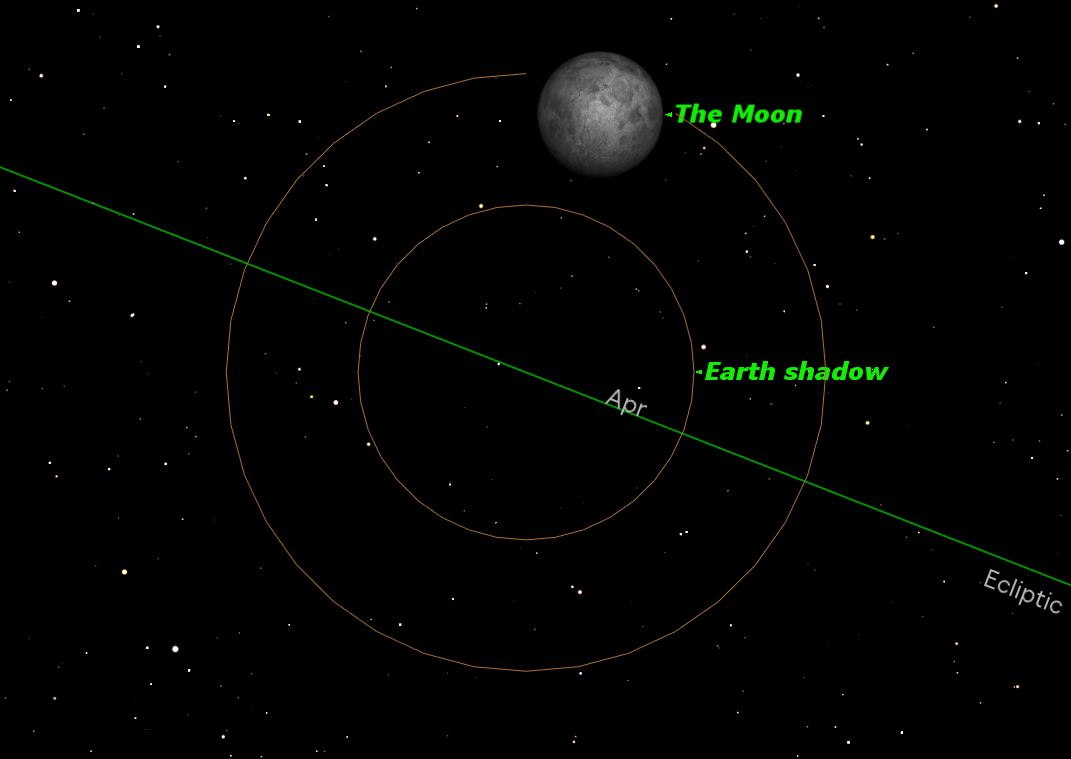
(Editor's Note: The Slooh Space Camera webcast of the penumbral eclipse has begun. Watch it live here: See Minor Lunar Eclipse in Slooh Webcast )
The moon will dive through Earth's shadow Friday evening (Oct. 18) in a lunar eclipse that will be visible to sharp-eyed skywatchers in much of the world.
Earth's natural satellite will pass through our planet's faint outer shadow, known as the penumbra, on Friday, with the time of deepest eclipse occurring at 7:50 p.m. EDT (2350 GMT). The effect of such a "penumbral eclipse" will be subtle compared to the dramatic spectacle of a total lunar eclipse, but it's still worth craning your neck skyward, experts say.
"Unusual shading on the southern half of the moon should be fairly plain," Sky and Telescope's Alan MacRobert wrote on Sunday (Oct. 13). "Look for the penumbral shadow to move from (celestial) east to west across the disc. You might be able to detect lesser traces of penumbral shading for about 45 minutes before and after mid-eclipse."

Weather permitting, observers in the eastern half of North America should get a good view of the eclipse. People in the Mountain and Pacific time zones won't be so lucky, however; for them, the deepest phase will occur in the late afternoon hours, before the moon rises. The striking penumbral lunar eclipse photos here show what the moon can look like during the event.
The penumbral eclipse will also be visible on Friday evening throughout the Caribbean and eastern South America, and successively later throughout the night and early morning hours in Europe, Africa and Asia, experts say.
Lunar eclipses occur when Earth's shadow blocks sunlight from reaching the moon. There are three different types of eclipse: total, partial and penumbral.
Get the Space.com Newsletter
Breaking space news, the latest updates on rocket launches, skywatching events and more!
A total eclipse occurs when Earth's core (umbral) shadow falls across the moon, casting the entire satellite in shadow. During a partial eclipse, the umbra takes a bite out of part of the moon, while a penumbral eclipse involves only Earth's fainter outer shadow, causing a much less dramatic dimming.
Editor's note: If you snap an amazing picture Friday's penumbral lunar eclipse or any other night sky view that you'd like to share for a possible story or image gallery, send photos, comments and your name and location to managing editor Tariq Malik at spacephotos@space.com.
Follow Mike Wall on Twitter @michaeldwall and Google+. Follow us @Spacedotcom, Facebook or Google+. Originally published on SPACE.com.
Join our Space Forums to keep talking space on the latest missions, night sky and more! And if you have a news tip, correction or comment, let us know at: community@space.com.

Michael Wall is a Senior Space Writer with Space.com and joined the team in 2010. He primarily covers exoplanets, spaceflight and military space, but has been known to dabble in the space art beat. His book about the search for alien life, "Out There," was published on Nov. 13, 2018. Before becoming a science writer, Michael worked as a herpetologist and wildlife biologist. He has a Ph.D. in evolutionary biology from the University of Sydney, Australia, a bachelor's degree from the University of Arizona, and a graduate certificate in science writing from the University of California, Santa Cruz. To find out what his latest project is, you can follow Michael on Twitter.
